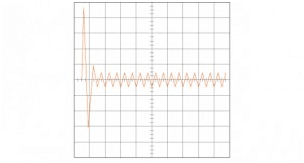WHAT IS INVOLVED IN UPS system sizing?
Superficially, a UPS sizing appears to be simple; add up the total kVA requirement of the critical load and allow for some spare capacity to arrive at the uninterruptible power supply kVA specification. Although this approach is certainly an essential starting point, there are other factors that must be understood and allowed to establish the true requirements of UPS sizing.
HOW DO I FIND OUT WHAT THE ACTUAL LOAD IS?
Most electrical equipment items have labels displaying their electrical characteristics. This information can be collated, and should include required supply voltage, number of phases, load current, power factor and power consumption. The number of phases is important, because if any part of the critical load is three-phase then a three-phase UPS system becomes essential. A three-phase UPS system can, however, supply both single – and three – phase equipment items.
kVA ratings can be noted and totalled using online tools such as the free UPS kVA Calculator from KOHLER Uninterruptible Power one of the UK’s leading UPS suppliers.
For a more accurate view of the actual load and how it varies over time, a site survey using portable measuring and monitoring equipment becomes vital. Many UPS suppliers offer this service, including KOHLER Uninterruptible Power who are offering a free site survey including tailored recommendations and a no-obligation quotation.
WHY IS THE LOAD’S POWER FACTOR SO IMPORTANT?
Historically, loads have tended to present an inductive or lagging PF, typically of around 0.8. The more recent shift to blade servers and other equipment using switched mode power supplies (SMPSs) has resulted in load PFs approaching unity or even becoming capacitive or leading. Legacy transformer-based uninterruptible power supplies derate substantially under these conditions, while modern transformerless UPS systems are less affected. Fig. 1 below shows the impact of PF on both uninterruptible power supply topologies. Note that the modern transformerless UPS system, in this example, need no derating at unity PF; the 300kVA system can deliver full 300 kW power while the transformer-based equivalent is limited to 240 kW.
WHAT EQUIPMENT-RELATED PROBLEMS AM I LIKELY TO ENCOUNTER?
Increasing SMPS efficiency has created increased harmonic content in the load. All computer power supplies must have at least passive power factor correction to comply with EU standard EN61000-3-2. Equipment that imposes harmonic distortion can also create other problems such as high or pulsed currents during normal operation or start-up. Known ‘problem’ equipment in this area includes laser printers and some types of lighting.
WHY IS PHASE-BALANCING IMPORTANT – AND WHY ISN’T IT STRAIGHTFORWARD?
For three-phase UPS systems, balancing the load across all phases is important to ensure that the uninterruptible power supply rating is fully utilised, as well as presenting a balanced load to the mains or backup generator if the UPS power supply is bypassed. Most modern UPS systems do not require careful phase balancing to operate correctly; even so, the load on any single-phase system must never exceed 33 per cent of the UPS power supply’s total rating.
Computer network equipment can create very high currents in the neutral conductor of a three-phase Y power distribution system even if the loads are apparently balanced. This problem typically occurs when single-phase computer units with non-linear load characteristics are connected across line L1, L2 or L3 and neutral. High neutral currents can cause overloading of feeders and transformers as well as voltage distortion and common-mode distortion.
ANY OTHER PROBLEMS I SHOULD ALLOW FOR?
Some equipment such as motors can cause problems through inrush current as well as the harmonic distortion mentioned above. If such devices lack soft-start circuits, they can draw up to 15 – 20 times their steady-state current, as Fig. 2 shows. Significant oversizing of the uninterruptible power supply is required to support these high-inrush loads.
Fig.2: Typical computer in-rush current
HOW DOES THE UPS POWER SUPPLY’S TOPOLOGY AFFECT ITS SIZING?
As we have seen, uninterruptible power supply topology is important, because transformer-based types are so much more adversely affected by poor power factor loads than their equivalent modern transformerless UPS systems.
However, modular transformerless UPS installations offer future-proofing benefits too; because additional UPS modules can so easily be plugged in-to the uninterruptible power supply frame as the need arises. This means uninterruptible power supplies do not have to be excessively oversized during initial UPS installation but are adaptable to cope with future power demands.
Incrementing UPS capacity using small modules allows accurate UPS sizing even with built-in redundancy. For example, a load requirement for 120kVA with UPS redundancy could be satisfied with two transformer-based uninterruptible power supplies of 120kVA each in a 1+1 redundant configuration. However, this represents a 50 per cent excess capacity, while the lightly-loaded transformer-based UPSs systems operate at low efficiency. By contrast, the 120kVA redundant requirement could be fulfilled by using four 40kVA UPS modules; this provides full load support with n+1 redundancy, while operating at high efficiency and only 40kVA extra capacity.
IS UPS SIZING AFFECTED BY ITS APPLICATION?
In some applications, the UPS power supply may simply be required to support a safe system shutdown if the power supply fails. Other users will expect the UPS system to maintain power throughout an extended blackout, allowing its load to remain in service. These diverse demands on UPS batttery autonomy will affect the size of the battery needed, possibly increasing the UPS power supply’s overall footprint.
IN SUMMARY
There are many factors to consider when sizing an uninterruptible power supply accurately for your particular site conditions. Knowledge of the critical load’s total kVA requirement, although essential, is not sufficient. The topology of the UPS power supply itself can affect the UPS sizing requirement, as can the electrical environment in and around the target site. Current and future expectations of the uninterruptible power supplie’s role must also be taken into account to ensure that the UPS system sizing is correct and future-proofed.
If you have any questions about our uninterruptible power supplies or UPS system sizing services please get in touch with KOHLER Uninterruptible Power via our contact page or call us on 0800 731 3269





